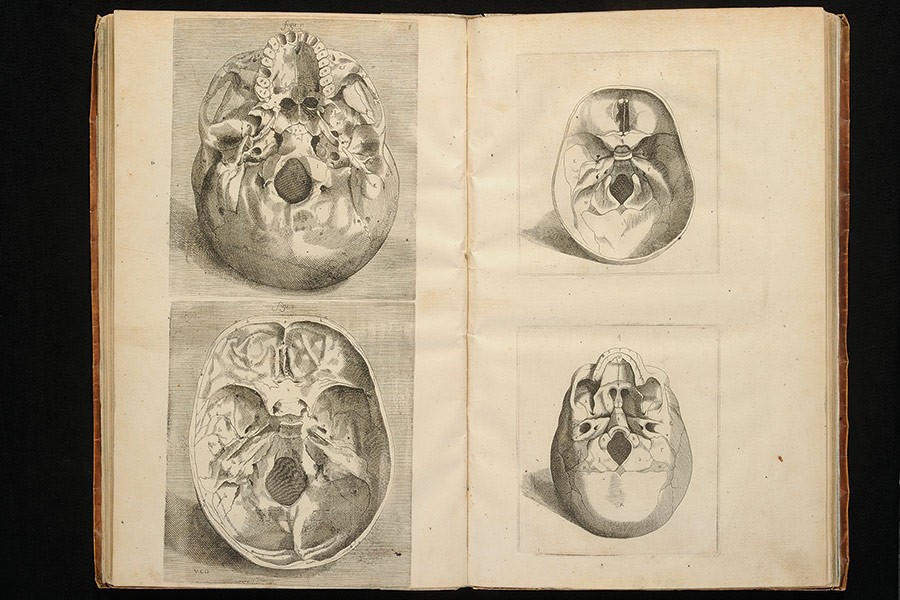When you think of technology that helped enhance our understanding of the human brain, chances are you think of CT scans and MRIs. Casting back a bit further in history, perhaps X-rays come to mind. But what about movable type?
A new exhibition at the George Peabody Library, The Dawn of Neurosurgery: Rare Books from the Collection of Eugene S. Flamm, makes a strong case that Gutenberg's invention was essential to the evolution of what we know today as neurosurgery.
Flamm, a renowned neurosurgeon and avid antiquarian book collector, has spent several decades collecting the essential earliest printed books that chronicle the birth and evolution of his own surgical specialization. His loan of these materials to Johns Hopkins, and his service as guest curator, has made this exhibition possible.
"We are thrilled to host this exhibition," says Winston Tabb, the Sheridan Dean of University Libraries and Museums. "Despite the relative youth of neurosurgery, its history stretches back to humankind's earliest attempts to understand the inner workings of the brain. These volumes, meticulously collected and curated by Dr. Flamm, offer a fascinating window into the development of a lifesaving discipline."
With the advent of printing in the 15th and 16th centuries, faithful reproduction of information and illustrations became possible on a scale previously unimaginable, aiding and augmenting the exchange of scholarly information at an exponential level. The 65 items on display span several hundred years of medical science, representing, among other things, the first era of scientific peer review.
Highlights of the collection include:
- The first dated printing of the Hippocratic oath, which appeared in a 1483 compendium of medical knowledge compiled at the first European medical school, in Salerno, Italy.
- A first edition of Andreas Vesalius' groundbreaking study of human anatomy based on dissection, the De Humani Corporis Fabrica (1543).
- One of the very first illustrations of battlefield surgery, printed in red and black to add equal emphasis to the wounded soldier's head and flames in the background consuming a besieged city, Feldtbüch der Wundartzney (1526).
"Considering the leadership that Johns Hopkins has always shown in the field of neurology, it only seems appropriate that the university hosts Dr. Flamm's magnificent collection of books," says Earle Havens, the William Kurrelmeyer Curator of Rare Books and Manuscripts at the Sheridan Libraries. "His connoisseurship has been unflagging, hence the amazing quality of the books themselves, many of them preserved in their original Renaissance bindings and adorned with fine woodcuts and engravings."
"Although I do not rely upon these books to plan today's operations, I believe it is extremely important for physicians and surgeons to have the perspective of the long history of man's attempt to help others with all aspects of disease," says Flamm. "This [exhibition] adds insight into the complexity of the problems we face, [and] reinforces the often forgotten role of surgeons working with the limited resources available to them, be it in the 16th or the 21st century."
A slideshow of images from the exhibition can be seen at http://flickr.com/photos/brodylc/sets/72157636625206483.
The Dawn of Neurosurgery runs through Sunday, March 2, at the George Peabody Library, 17 E. Mount Vernon Place. The George Peabody Gallery is open Monday through Friday 9 a.m. to 5 p.m., Saturdays 9 a.m. to 1 p.m., and Sundays noon to 5 p.m.
Posted in Health, Arts+Culture
Tagged libraries, neuroscience, peabody library, rare books








